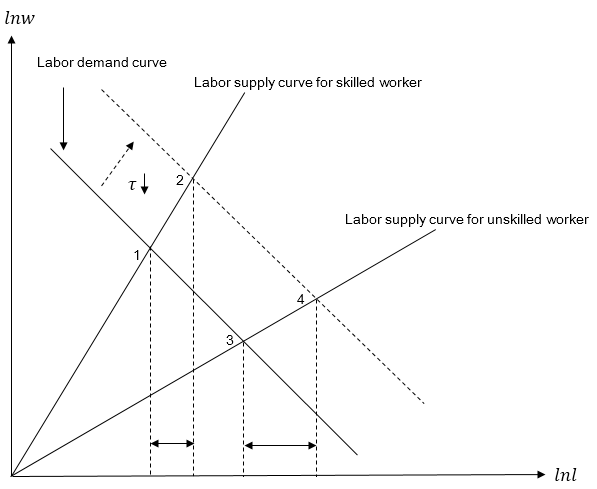Can intermediate input trade liberalization affect worker health in a developing country like China, and if so, how? Do the impacts differ between skilled and unskilled workers? What are the welfare implications of input tariff reductions once health factors are considered?[1] With the support of the National Natural Science Foundation of China (Grant No. 71773148) , the research team of Professor Faqin Lin of China Agricultural University, Professors Haichao Fan of Fudan University, and Professor Shu Lin of the Chinese University of Hong Kong have made significant progress in the field of how international trade affects worker health. Their recent paper entitled “The hidden cost of trade liberalization: Input tariff shocks and worker health in China” was published online by Journal of International Economics in June 2020. This paper develops a theoretical model and uses empirical evidence to study the impact of a reduction in input tarrifs on worker’s working time and how it affects worker health, and the effects of trade liberalization on widening both the income and the health gaps between skilled and unskilled workers. Here’s the link to the paper: http://www.sciencedirect.com/science/article/pii/S0022199620300659.
This study used an illustrative theoretical model of company to reveal the impact of input tariff reductions on firm behavior, workers’ supply of labor, and their health status. Figure 1 indicates that this impact on skilled and unskilled workers can be different: skilled workers can expect more increase in income with less working time and intensity compared with unskilled workers. Therefore, the income inequality between the skilled and unskilled workers could be worsened considering the factors of work injuries, their health outcomes and medical expenses.
The empirical analysis to validate the model prediction, endogeneity and its heterogeneity on influence used the following data sets: (1) provincial-level input-output tables, tariffs at various industry levels, and labor composition in different urban industries (2) individual-level data obtained from the China Health and Nutrition Survey (CHNS); and (3) Data of the impact variables of open policies at regional levels (such as trade policy uncertainty, FDI policy, decentralization of foreign trade management rights, export quotas, export tariffs, environmental regulations and others). The research finds that one standard-deviation reduction in the input tariff is associated with a 7.6-percentage-point increase in the probability of getting illness or injury. More importantly, such findings show heterogeneity in workers with different skill levels, and the low-skilled workers suffer the negative impact the most. The result also suggests that ignoring health outcomes would result in an underestimation of welfare disparity between skilled and unskilled workers by about 17.44% according to the traditional Stolper-Samuelson Theorem method.

Figure 1.The impact of a reduction in input tarrifs on firms’s demand of labor

Add: 83 Shuangqing Rd., Haidian District, Beijing, China
Postcode: 100085
Tel: 86-10-62327001
Fax: 86-10-62327004
E-mail: bic@donnasnhdiary.org
京ICP备05002826号 文保网安备1101080035号 Copyright 2017 NSFC, All Right Reserved